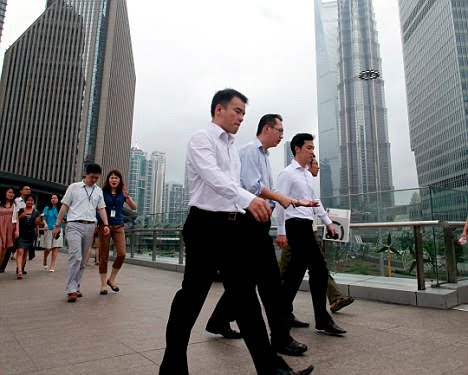From all indications, it just seems so. But let’s see how. The average entrepreneur or employee has to juggle a lot of things every day. Think about working out, grooming, shuttling to the office, completing tasks, reporting to superior officers and more. It may not seem obvious that these activities could be stressful but when we look at the cumulative effect of this cycle over a long time, we realise that work stress becomes real.
It is worse for employers of labour who are oftentimes business owners. They tend to do all or most of the things their employees have to do in addition to the very vital need to constantly work on strategies that will help take the business to the next level. As we all know, increased mental workload equals increase in stress levels or the likelihood that it develops.
Knowing that workplace stress is real, every strategy that will help reduce it is pretty much welcome. A quick strategy that comes to mind is use of cars that can literally drive themselves. We’ll learn more about them shortly.
Commuting to Work During COVID-19: A New Reality
COVID-19 has increased the number of people walking or biking or driving to work in their personal cars in lieu of public transit. For most workers, this is a new reality that they are struggling to adapt to. And social distancing protocols to the situation and realise that this is a little more complex than it appears.
With more workplace-bound pedestrians, cyclists and car owners on the road than ever before, each juggling various thoughts (and perhaps stressed out too) it comes as no surprise that we’ve had more fatalities in recent times than in the 90s.

In 2018, the US saw more pedestrians and cyclists killed since the 90s (an occurrence spurred by the combination of lack of awareness in road commuters and the economic priorities of car manufacturers, which Bloomberg analyzed this year).
“Put in simple terms: workers are stressed out today more than ever before, they tend to lack a lot of focus while finding their way to work, the scare of the COVID-19 pandemic and its economic implications on their source of livelihood worries them, given this mental and physical chaos workers are far more stressed out than ever before and more prone to road mishaps whether they are driving or cycling or biking” began Bastien Beauchamp, CEO of !important , “It is therefore not just a possibility, but a certainty, that selfdriving cars will help take the stress off workers who drive themselves to their workplace. This could just be a typical case of killing two birds with one stone as the road safety of both the driver and the pedestrian can be significantly improved in one swift move.
Selfdriving Cars Could Help Work-bound Commuters Stay Safe
Having to pay very little attention to the driving process while you find your way to work could have an interesting benefit. You will be tasking your brain very minimally thereby reserving a lot of energy and “mental freshness” you’ll be needing for the day’s work.
Put in another way, workers will arrive the office every morning almost 100% fresh and with laser sharp focus for the tasks that lie ahead for the day. And for some employers and employees alike, this is all they need to have a very productive day at work. It becomes a lot more impressive when we take into cognizance the fact that some of these selfdriving vehicles are more accurate than man. For instance, Tesla claims its “autopilot” mode is nine times safer than driving yourself. This could turnout out to be good news for all road users today. At a time when road accidents have become quite dangerous for pedestrians and cyclists – many of them being people going to work – improvements are needed now more than ever.
Following the reality of COVID-19 in 2020, we’re on the brink of a paradigm shift. !important, among many others is calling for a change in the industry for the sake of workers across the world. The post COVID-19 world asks for this change too. But it will depend on industry leaders adopting and scaling protective technology that prioritizes safety for all road users. It will depend on business executives leading their employees in the right direction as it concerns their safety at the office and on the road. It will also depend on the workforce realizing the need to demand and tilt towards processes, technologies and standards which ensure their safety both at work and on their way to work.

